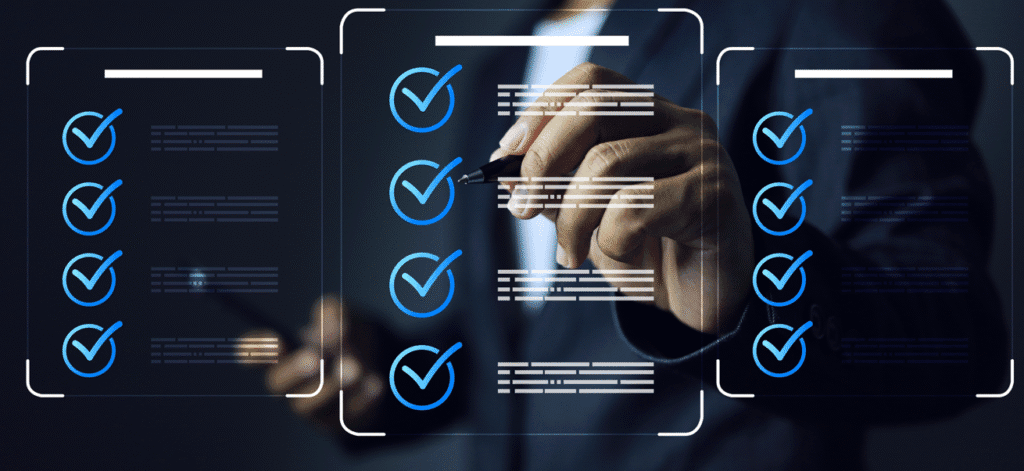Understanding Fourth-Party Risk and How to Prevent Cascading Breaches
When companies consider cybersecurity, they often look inward—focusing on their own systems, processes, and people. But today’s biggest threats increasingly lie outside the perimeter. In fact, your most significant vulnerability may be several layers removed—hidden deep within your extended supply chain.
What Is Fourth-Party Risk?
Third-party risk management is now standard practice, especially for regulated industries. But many organizations fail to recognize the next layer: fourth-party risk. These are the vendors your vendors rely on. And when those relationships are unknown or unmonitored, they open the door to cascading failures.
In today’s interconnected economy, fourth-party risks are not rare—they’re systemic. According to an article by Cyolo, “Third- and fourth-party security incidents have widespread effects. A single compromised vendor affects 4.73 companies on average, and in 2022, 54% of organizations suffered a breach because a third-party vendor was breached.”
Nearly all third-party vendors in a typical supply chain are connected to a web of fourth-party service providers. That’s thousands of indirect dependencies, often with no visibility or control.
Real-World Failures: The Domino Effect
According to an article by Risk Ledger, and other data from Wikipedia contributors, the 2023 MOVEit breach, is a case in point. It wasn’t just the company using MOVEit that was affected—it was their clients and their clients’ clients. Risk Ledger concluded: “So your suppliers’ suppliers may in fact present the weakest link in your organisation’s supply chain. This is why the fallout from the MOVEit Transfer attack was so huge, reportedly affecting over 2,000 organisations worldwide and exposing the data of over 62 million people.” One vulnerability triggered widespread data exposure across dozens of organizations and industries. The root cause? A blind spot in software dependencies and data flows—classic fourth-party risk.
Cybercriminals are increasingly targeting software providers and digital service chains, knowing that a single compromise can grant access to hundreds of downstream targets. These indirect attack surfaces are not only larger but more challenging to monitor.
Why Fourth-Party Risk Is So Hard to Manage
Several factors make fourth-party risk uniquely difficult:
- Lack of visibility: Many organizations don’t require vendors to disclose their service providers.
- Complexity: Cloud-based and SaaS ecosystems make mapping dependencies a challenging task.
- Trust assumptions: Vendors may assume their partners are secure—without evidence.
- Monitoring gaps: Even robust vendor risk programs rarely assess beyond the first layer.
Indirect vendors often access core systems, share infrastructure, or store sensitive data—all without the end client’s awareness. The potential for regulatory exposure, reputational damage, and financial loss grows with each unknown link in the chain.
How to Protect Against Cascading Vulnerabilities
Mitigating fourth-party risk requires shifting from a reactive to a proactive risk governance approach. Here are four steps to strengthen your defences:
1. Inventory Your Digital Supply Chain
Start with your known vendors, then ask: who do they rely on? Encourage (or require) disclosure of fourth-party providers during onboarding and contract renewals.
2. Apply Zero Trust Security: Segment and Secure Access
Even trusted vendors should have limited, monitored access. The Cyolo blog highlights the role of zero-trust architectures, including network segmentation and access-by-purpose controls, in limiting the blast radius caused by a security incident. “On the whole, zero trust decreases an organization’s reliance on factors and behaviors beyond its control.”
3. Adopt Continuous Monitoring
Don’t treat risk assessments as one-and-done. Utilize tools that provide ongoing visibility into vendor health, including their connections. OTIFYD suggests to “conduct regular vulnerability assessments and penetration testing to identify gaps and potential weaknesses in systems” and connections.
4. Strengthen Contracts and Expectations
Embed language in your vendor contracts requiring security standards not just for your third parties—but for the partners they bring with them. This includes access controls, incident response obligations, and breach notification timelines.
Closing the Gaps
You can’t manage what you don’t see. As businesses become more reliant on external providers—from cloud infrastructure to niche SaaS—regulators and attackers alike are scrutinizing your supply chain’s weak links. The next breach might not come from your systems—but from a company you’ve never heard of, silently connected to your operations.
The good news? Awareness is the first step. By expanding your definition of cybersecurity to include fourth-party risk, you’re better positioned to prevent cascading failures—and protect your organization from the shadows of its own supply chain.
Resources
Botzer-Tullman., Jennifer. Cascading Risk: The Next Generation of Third-Party Risk. 8 January 2024. Cyolo. https://cyolo.io/blog/cascading-risk-the-next-generation-of-third-party-risk
Cascading supply chain attack. 23 April 23. OTIFYD. https://otifyd.com/blog/cascading-supply-chain-attack/
Fourth Party Risk Management: Impact of Breaches | Risk Ledger. 3 October 2024. https://riskledger.com/resources/how-fourth-party-breach-affect-organisation
Wikipedia contributors. (2025, May 20). 2023 MOVEit data breach. Wikipedia. https://en.wikipedia.org/wiki/2023_MOVEit_data_breach



